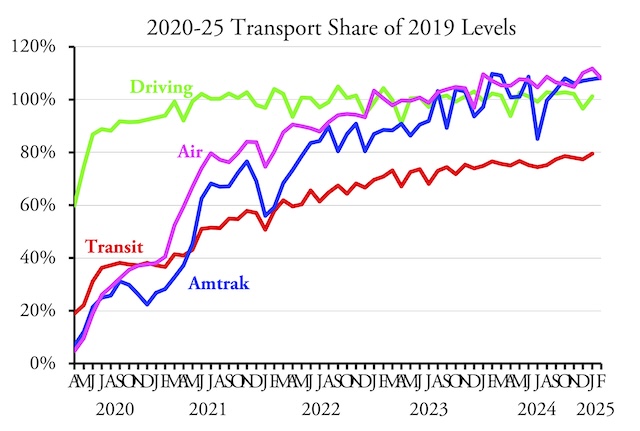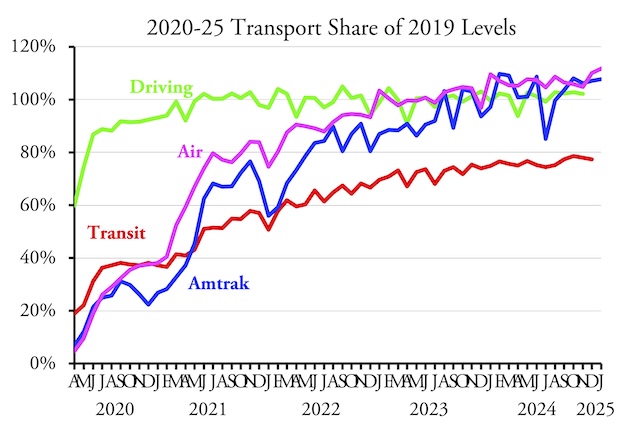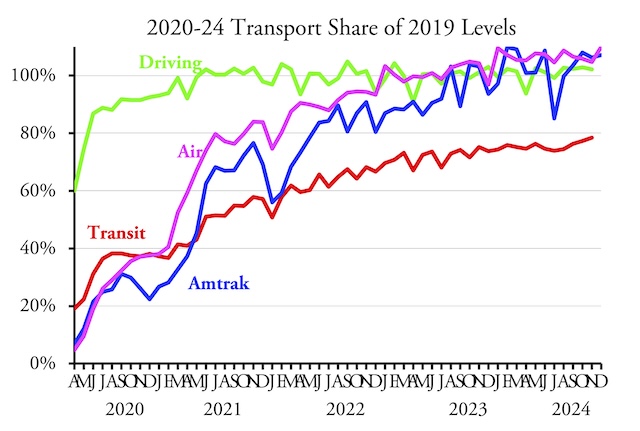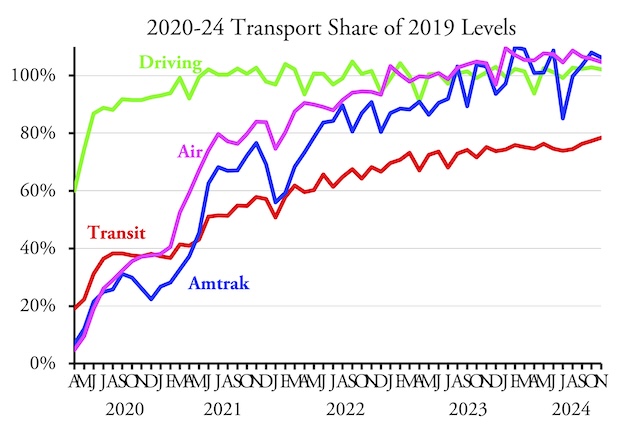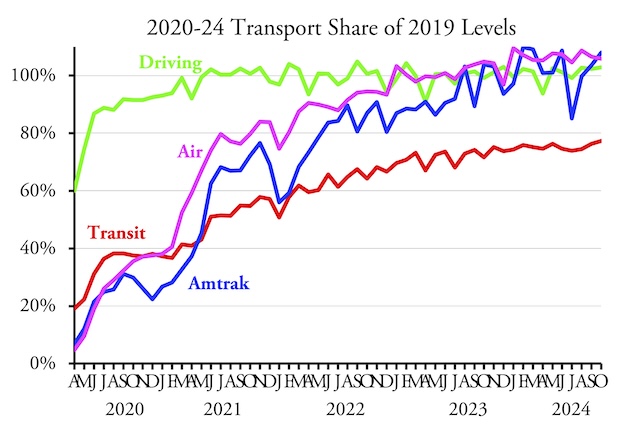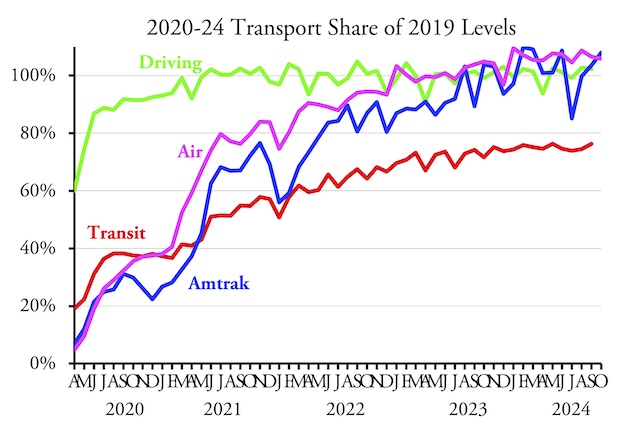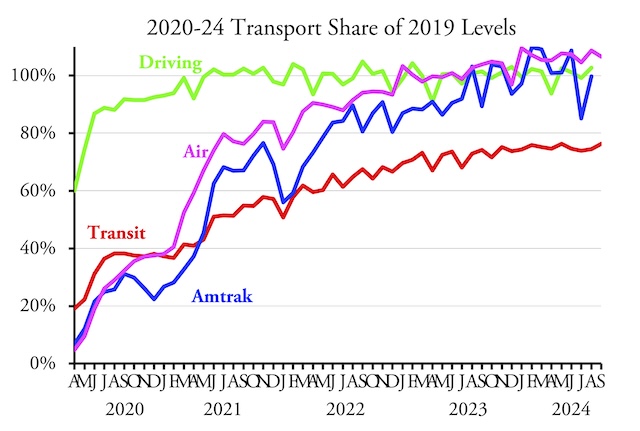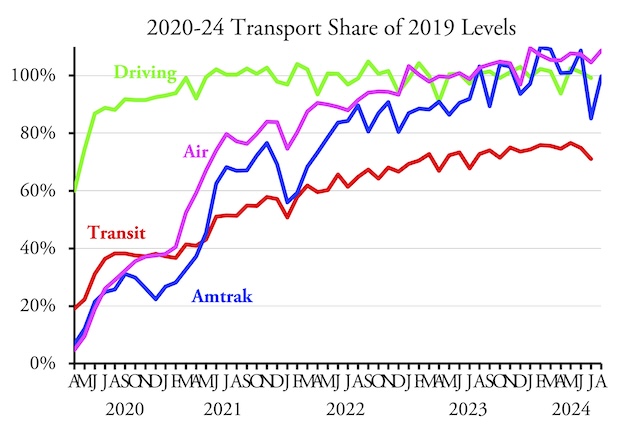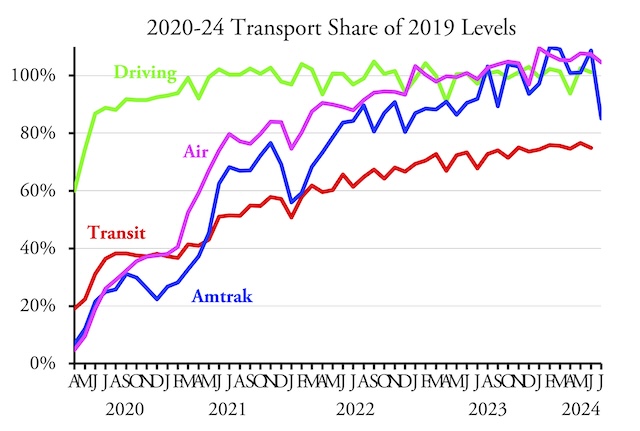Amtrak boomed, carrying 21 percent more passenger-miles in March 2025 than the same month before the pandemic. The airlines carried 5.5 percent more passengers and highways carried 2.2 percent more vehicle-miles. As expected, transit continues to lag behind, carrying only 80.9 percent as many passengers as in March of 2019. That’s still the most since the beginning of the pandemic, but it is only 0.73 percent more (relative to 2019) than in February.
Amtrak data are from March monthly performance report; airline riders from Transportation Security Administration; highway vehicle-miles from the Federal Highway Administration, and transit data are from the Federal Transit Administration.
The transit industry is increasingly desperate to get more subsidies to offset the decline in ridership and the increase in operating expenses since 2019. Flush with Congressional COVID-relief funds, agencies increased salaries and wages and continued to operate nearly as many vehicle-miles of service despite the declines in ridership. Now the relief funds are running out and agencies that previously relied heavily on fares to fund their operations are getting panicky. Continue reading


